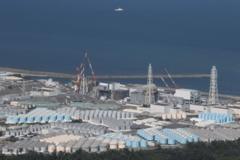On Wednesday, the workers at Japan's Fukushima nuclear plant were ordered to evacuate after a tsunami warning was issued in response to an earthquake measuring 8.7 on the Richter scale, which struck off Russia's far eastern coast. The plant's operator confirmed that while all 4,000 employees were safely evacuated, there were "no abnormalities" detected at the site despite the ongoing alert.
This unsettling turn of events rekindles haunting memories of the catastrophic triple disaster that struck Japan in 2011. On March 11, a powerful 9.0-magnitude earthquake triggered a massive tsunami that devastated communities and caused significant destruction at the Fukushima plant, ultimately leading to nuclear meltdowns that affected the surrounding area for years.
As a result of the 2011 disaster, over 150,000 residents within a 30km radius were evacuated due to radiation risks, and extensive areas remain off-limits. The aftermath saw extensive damage to reactor buildings, with hydrogen explosions and leaking radioactive material contaminating the atmosphere and Pacific waters.
The cleanup of Fukushima remains daunting, with approximately 880 metric tons of hazardous material still inside the plant, including melted nuclear fuel and debris. The Tokyo Electric Power Company (Tepco), which operates the plant, faces significant challenges in removing this waste which is expected to require heavy manpower over the next 30-40 years. The cleanup is projected to cost around 21.5 trillion yen ($145 billion).
Recent announcements from Tepco indicated that the full-scale removal of this fuel debris has been pushed back to 2037 or later, causing skepticism among experts about whether decommissioning can be completed by the government's target of 2051.
Further complicating factors, the plant continues to generate contaminated water, now stored in over 1,000 tanks on-site, prompting Japan's decision to release some treated wastewater into the ocean despite widespread public outcry.
In a notable policy shift post-Fukushima, Japan is slowly increasing its reliance on nuclear energy again, navigating growing energy demands from sectors such as technology and AI. Kicking off conversations about restarting suspended projects, electric utility companies are exploring new reactor construction amidst local opposition and heightened concerns from the recent tsunami alert.
As these developments precipitate further anxiety, Japan's Meteorological Agency noted that tsunami waves have already reached parts of the coastline, including areas near Fukushima, putting thousands on alert and invoking fears of a repeat disaster. Located on the Ring of Fire, Japan's seismic activity sees approximately 1,500 quakes annually, sustaining a national consciousness of preparedness for potential major earthquakes.
This unsettling turn of events rekindles haunting memories of the catastrophic triple disaster that struck Japan in 2011. On March 11, a powerful 9.0-magnitude earthquake triggered a massive tsunami that devastated communities and caused significant destruction at the Fukushima plant, ultimately leading to nuclear meltdowns that affected the surrounding area for years.
As a result of the 2011 disaster, over 150,000 residents within a 30km radius were evacuated due to radiation risks, and extensive areas remain off-limits. The aftermath saw extensive damage to reactor buildings, with hydrogen explosions and leaking radioactive material contaminating the atmosphere and Pacific waters.
The cleanup of Fukushima remains daunting, with approximately 880 metric tons of hazardous material still inside the plant, including melted nuclear fuel and debris. The Tokyo Electric Power Company (Tepco), which operates the plant, faces significant challenges in removing this waste which is expected to require heavy manpower over the next 30-40 years. The cleanup is projected to cost around 21.5 trillion yen ($145 billion).
Recent announcements from Tepco indicated that the full-scale removal of this fuel debris has been pushed back to 2037 or later, causing skepticism among experts about whether decommissioning can be completed by the government's target of 2051.
Further complicating factors, the plant continues to generate contaminated water, now stored in over 1,000 tanks on-site, prompting Japan's decision to release some treated wastewater into the ocean despite widespread public outcry.
In a notable policy shift post-Fukushima, Japan is slowly increasing its reliance on nuclear energy again, navigating growing energy demands from sectors such as technology and AI. Kicking off conversations about restarting suspended projects, electric utility companies are exploring new reactor construction amidst local opposition and heightened concerns from the recent tsunami alert.
As these developments precipitate further anxiety, Japan's Meteorological Agency noted that tsunami waves have already reached parts of the coastline, including areas near Fukushima, putting thousands on alert and invoking fears of a repeat disaster. Located on the Ring of Fire, Japan's seismic activity sees approximately 1,500 quakes annually, sustaining a national consciousness of preparedness for potential major earthquakes.




















